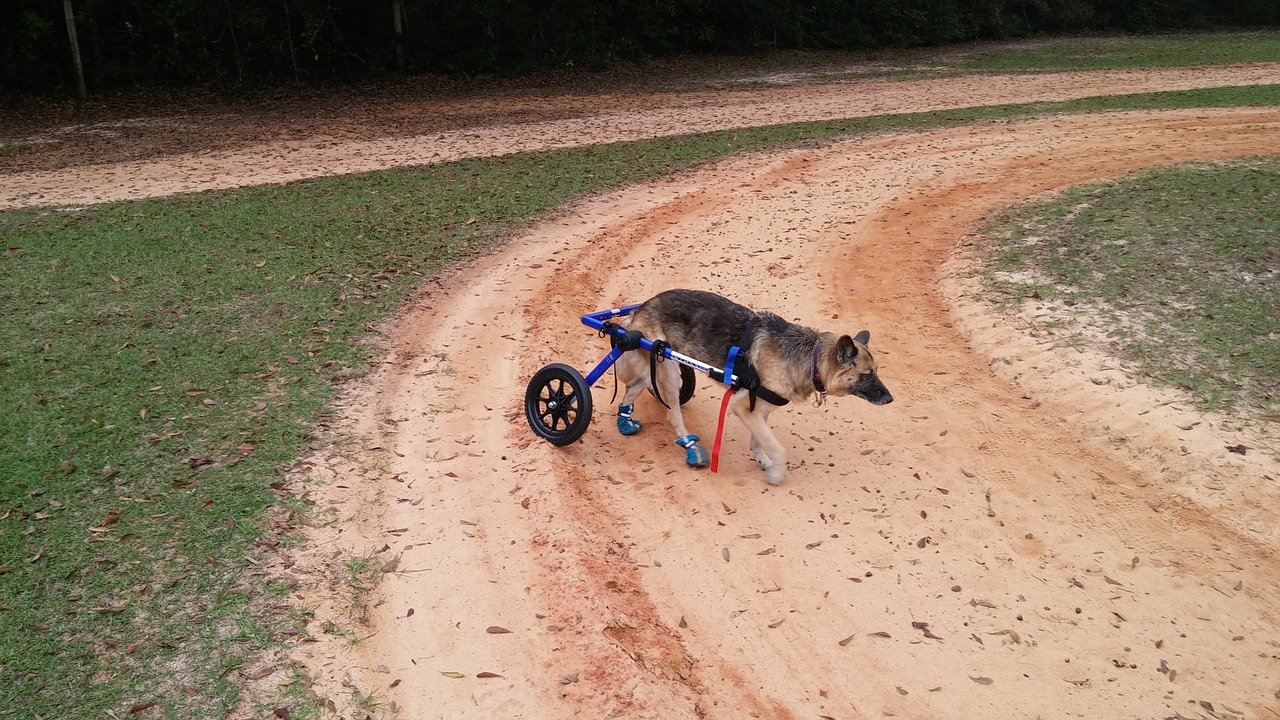German shepherds are highly prone to hip and joint diseases that mostly affect the back legs. These diseases put the German shepherd through a lot of pain and it’s a difficult time for you as the parent. These issues can be avoided if you follow measures to make your German shepherd legs stronger before they can completely get weak.
You can make your German shepherd’s back legs stronger by feeding him a balanced diet, regular exercising, using a support harness, giving him hip and joint supplements, disease management methods, maintaining a healthy weight, and massaging his back legs.
How To Make German Shepherd Back Legs Stronger?
Diet
This breed is already big and the results of breeding might be unpredictable, keeping a balanced meal and maintaining an appropriate weight is a sensible preventative strategy.
Adequate proteins, vitamin D, vitamin K and magnesium, Vit C, and Vit E are some of the main nutritional alternatives to supply. You should also make sure that the dog food you buy for your German Shepherd contains adequate calcium and phosphorus to promote healthy bone formation.
Consult your veterinarian about the right portioning of these nutrients, as they may vary based on your dog’s age, weight, and overall health. If necessary, your veterinarian may prescribe bone and joint supplements like glucosamine, chondroitin, and collagen.
Regular Exercising
Your German shepherd benefits from regular exercise in two ways. One, it strengthens the hind and front leg muscles, and two, it aids in the detection of changes in the hind leg’s performance.
There are numerous routines to pick from, but I’ll focus on one that targets the back legs. It all comes down to the sit-to-stand procedure.
You begin with your GSD sitting in front of you in this routine. Then you take a step back and lure the dog over to you. When he follows, give him a treat (to hold his attention) and seat him down again. The procedure must be repeated as many more times as possible.
The sit-to-stand technique is easy, but it helps to develop your dog’s rear legs’ quadriceps, and hamstrings. Taking your dog for daily walks (particularly up and down hills) or swimming sessions will also improve leg muscles and aid with weight management. Hydrotherapy is particularly good for dogs that have movement problems.
Disease Management
Bone weakening can be caused by a variety of diseases, including bacteria, viruses, and parasites. These issues can be rectified if greater care is taken and adequate medicine is administered for disease management.
In any case, keep a lookout for abnormalities in the movement and contact your veterinarian if you have any concerns. An unsteady walk, slipping on the floor, sitting sideways, hips giving way, swelling, decreased muscular mass in the rear legs, and a shorter stride on the hind legs are all common signs in German Shepherds.
Remember that most dogs will not express pain or discomfort at first, so it’s up to you to be on the lookout for signs of illness.
Using a support harness
When your shepherd moves around, it’s sometimes important to minimize the strain he puts on his back legs. The support harness is used in this situation. A harness helps to relieve some of the tension that the dog may be experiencing when taking walks, for example, until the muscles of the hind legs are strong enough to take it. The harness relieves pressure on your dog’s poor rear legs and makes it simpler for him to walk.
Hip and Joint Supplements
You should give your German shepherd joint and hip supplements to strengthen his back legs.
Hip and joint supplements contain the following:
Glucosamine – aids in the relief of joint pain and injury.
Chondroitin sulfate – helps your dog’s joints by reducing inflammation.
Fish oils contain Omega-3, a substance that helps manage inflammation and improves your dog’s mobility. Collagen – maintains your pet’s bones and joints healthy.
Keep Your Dog at a Healthy Weight
The more weight your pet has, the more pressure their bones and joints are under. In turn, moving around could be difficult for your furry friend. Excess weight pressure on your dog’s bones might lead them to deteriorate and develop other health problems.
Massage
Massaging your German shepherd’s back legs, especially after an intense workout, is a good way to help them. Dog massage relieves fatigue and tension in the hind leg muscles and aids in the detection of any unrelated pain that could indicate a problem.
Conclusion
By using the above methods, you can make your German shepherd’s back legs stronger but always remember to consult your vet first.
Use preventive measures to ensure that your German shepherd’s back legs are in good condition because weak legs can affect his mobility, stability, and overall health.
